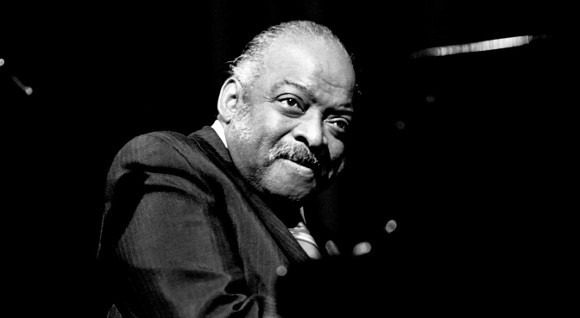
William James Basie was one of the most notable jazz musicians of the 20th century. He was born on August 21, 1904 to Harvey Lee and Lillian Basie in Red Bank, New Jersey. Both his parents were musicians, which influenced Basie from an early age. His father played the mellophone, and his mother played the piano, and also gave Basie piano lessons. Later, he received lessons from a professional, arranged by his parents. Basie was not an aspiring student, and dreamed of becoming a musician. He finished junior high but his main focus always remained music. He quickly became proficient at playing the piano and drums, affiliating himself with small time acts at locals theatres and clubs.
During the 1920s, Basie played the vaudeville circuit, which was mostly song and dance performances with an element of burlesque. In 1928, he joined Walter Page’s band called “Blue Devils”, which was his first exposure to a big band. He then joined a band led by Bennie Motten, which popularized swing music. Upon Motten’s death in 1925, Basie formed his own band named “Barons of Rhythm”, including some of the original members of the Blue Devils, and the addition of tenor player Lester Young. He got the title of “Count” after a radio announcer added that to his name, to add some spice. The name stuck throughout his career, and he was henceforth referred to as Count Basie.
The newly formed band played at local clubs and sometimes made radio appearances. One night, with some time to kill, they began improvising, and the resulting track became of their most famous songs, later titled “One O’ Clock Jump”. The band was named “Count Basie and His Barons of Rhythm” and they relocated from Kansas to Chicago. They had an innovative sound, particularly because of the use of two saxophone players when most bands still used just one, which resulted in saxophone “duels”, a technique later adopted by several other bands. In Chicago, they met producer John Hammond, with whom they had recording sessions and released tracks such as “Shoe Shine Boy”, “Evening”, “Boogie Woogie” and “Oh, Lady Be Good”.
The band moved to New York in 1937 where Basie was introduced to Billie Holiday, who performed with them. Holiday then left to perform with Artie Shaw’s band. Basie’s band played at the Savoy, with singers like Ella Fitzgerald. He also performed for Hollywood stars such as Clark Gable, Bette Davis, Carmen Miranda and Jerry Colonna. Following World War II, the popularity of swing music began to fade and Basie disarmed the band but continued to perform with other artists. After changing the lineup, the band got back together in the 1950s and toured all over Europe including France, The Netherlands, and Germany. The band continued to perform on television, radio and tours and Basie himself appeared in movies such as “Cinderella” starring Jerry Lewis, “Blazing Saddles” and the ABC show “The Pat Boone Chevy Showroom”. Throughout his career, Basie performed with some of the most notable blues performers including Jimmy Rushing, Big Joe Turner, Helen Humes, and Joe Williams.
Count Basie was married twice, first to Vivian Lee Winn in Missouri, divorcing her in 1935, and next to Catherine Morgan in 1950. Morgan died in 1983 at the age of 67, and Basie followed in 1984, due to pancreatic cancer at the age of 79. He is widely regarded as one of the most influential jazz musicians of the 20th century.
